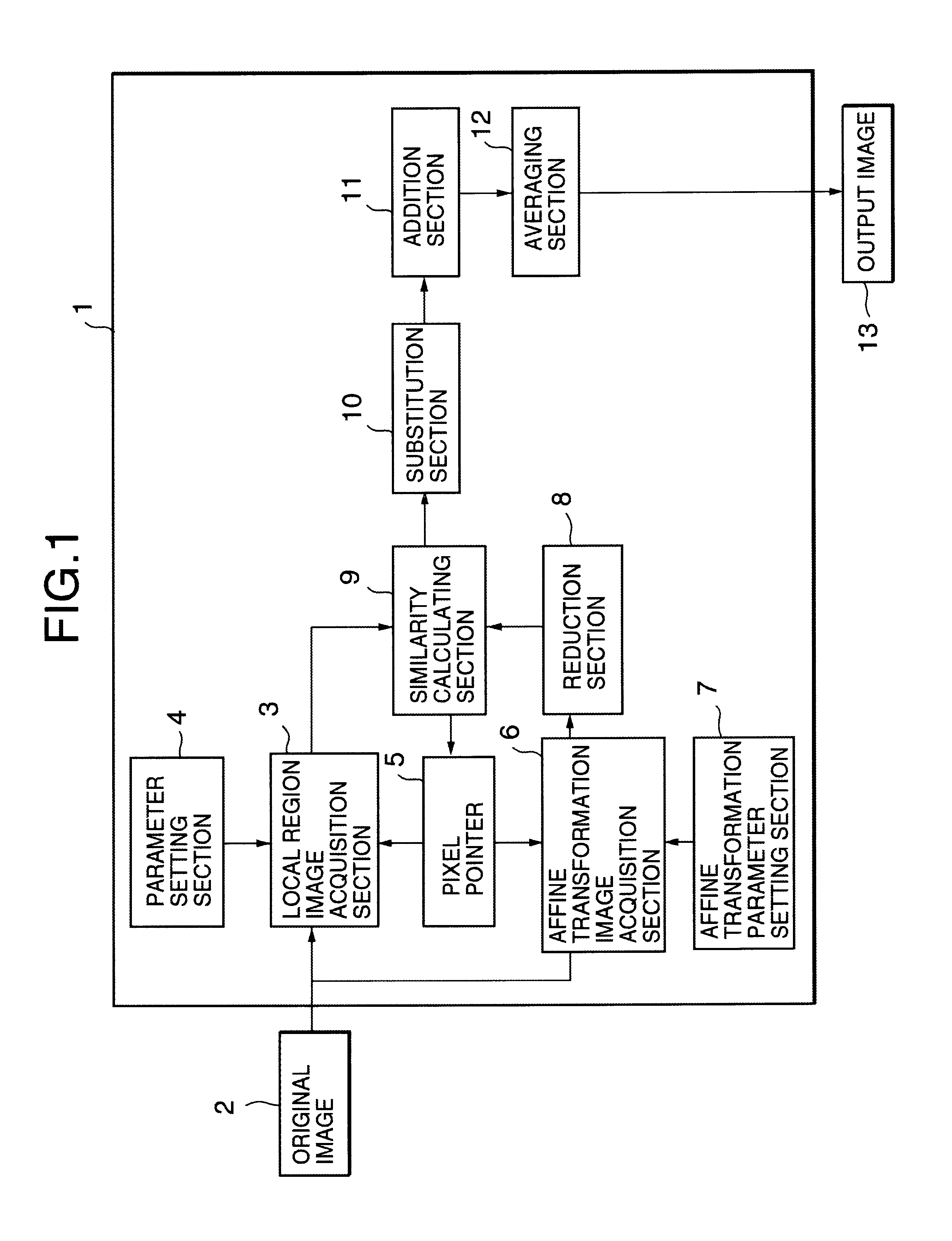Image processing device and image processing method
- Summary
- Abstract
- Description
- Claims
- Application Information
AI Technical Summary
Benefits of technology
Problems solved by technology
Method used
Image
Examples
first embodiment
[0064]1. First Embodiment
[0065]FIG. 1 to FIG. 4 are block diagrams illustrating the layout of an image processing device according to a first embodiment of the present invention.
[0066]A main image processing device 1 applies prescribed image processing to an original image that is input from original image holding section 2 and outputs this processed image to output image holding section 13. Original image holding section 2 and output image holding section 13 are constituted of memories etc. Original image holding section 2 and output image holding section 13 may be incorporated in the layout of image processing device 1, or may be respectively separately constructed from image processing device 1. For example, a PC card may provide original image holding section 2 and output image holding section 13, with the original image data being read from the PC card on which the original image is recorded and the processed image being written back to an empty region of the same PC card.
[0067...
second embodiment
[0091]2. Second Embodiment
[0092]Next, a second embodiment of the present invention is described with reference to FIG. 5. In the following embodiments, structural elements which are the same as structural elements described above are given the same reference symbols and further description thereof is omitted. A characteristic feature of this embodiment is that an affine transformation image of the same size as the local region image is directly acquired by acquiring partial scattered pixels from the image region corresponding to the affine transformation image.
[0093]As shown in FIG. 5(a), an affine transformation image of the same size as the local region image can be obtained by acquiring an affine transformation image with size 2n×2n and reducing the size of this affine transformation image that is thus obtained.
[0094]In contrast, as shown in FIG. 5(b), from a region corresponding to an affine transformation image of size 2n×2n, instead of acquiring all the pixels in this region, ...
third embodiment
[0095]3. Third Embodiment
[0096]Next, a third embodiment of the present invention is described with reference to FIG. 6. A characteristic feature of this embodiment is that, based on properties of the original image etc, it is made possible to set the values of the affine transformation parameters for each color component.
[0097]First of all, when performing image improvement using the image processing device, the user can select exclusively (S21) either color bleeding prevention mode or sharp mode. In color bleeding prevention mode, the fractal interpolation according to the present invention is applied to the R component and B component of the original image represented by an RGB colorimetric system, in order to suppress color bleeding. In contrast, in sharp mode, the fractal interpolation is applied solely to the G component in order to make the outline etc of the image clear. For example, in a digital camera or the like in which a single unit is formed by in each case one R compon...
PUM
 Login to View More
Login to View More Abstract
Description
Claims
Application Information
 Login to View More
Login to View More - R&D
- Intellectual Property
- Life Sciences
- Materials
- Tech Scout
- Unparalleled Data Quality
- Higher Quality Content
- 60% Fewer Hallucinations
Browse by: Latest US Patents, China's latest patents, Technical Efficacy Thesaurus, Application Domain, Technology Topic, Popular Technical Reports.
© 2025 PatSnap. All rights reserved.Legal|Privacy policy|Modern Slavery Act Transparency Statement|Sitemap|About US| Contact US: help@patsnap.com



